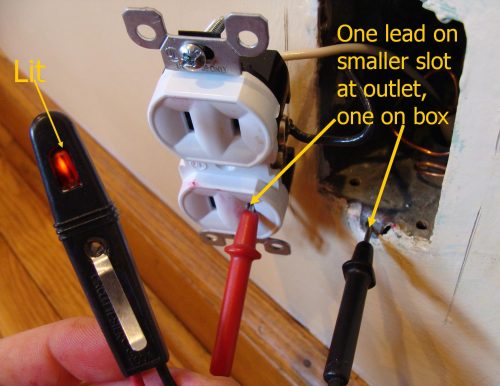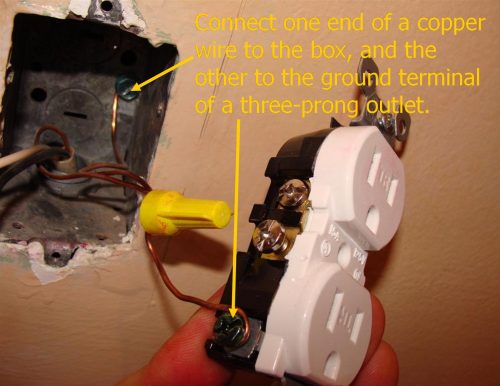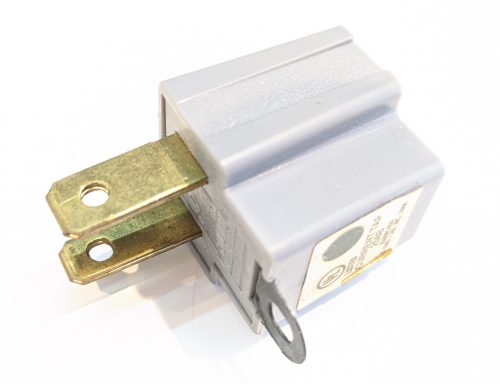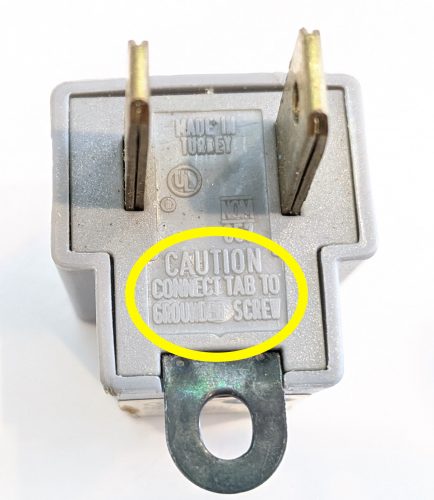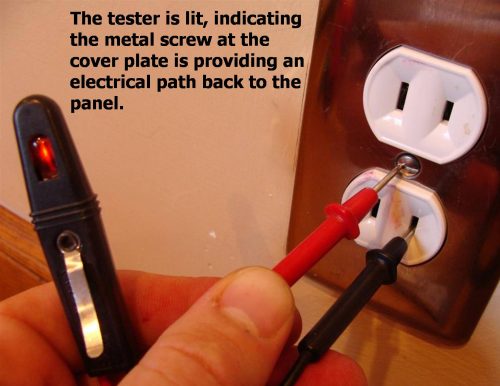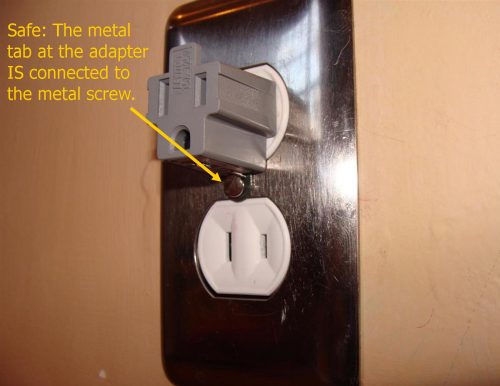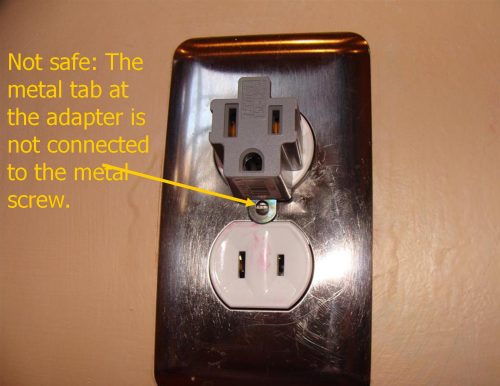What’s the problem with two-prong outlets? Nothing. Lots of old homes have two-prong outlets, and this isn’t a defect. It’s only an issue when someone needs to use a three-prong plug. When that’s needed, the appropriate fix is to upgrade the two-prong outlet to a three-prong outlet. This upgrade can be accomplished in a few different ways. Today I’ll give a brief explanation of what the third prong is for, I’ll discuss a few ways to convert to a three-prong outlet, and I’ll explain why two-to-three prong adapters are usually unsafe.
Disclaimer: this blog post gives an overview of how to convert a two-prong outlet to a three-prong. This is not a DIY guide for handy homeowners. If you’re not qualified to do electrical work, don’t do it. You could kill yourself or burn your house down.
The third prong on an outlet is commonly referred to as ‘the ground’, and its job is to bond electrical components. It also provides an alternate path for electricity that may stray from an appliance or product. This is an important safety feature that has been required throughout homes since 1962. Under normal conditions, there should never be any current on the ground wire. Think of it as an emergency lane on the highway; things should work just fine without it, but when something goes wrong, you better have it. This minimizes the risk of electric shock and allows surge protectors to do a better job of protecting your electrical equipment.
How to upgrade to a three-prong outlet
The best way to upgrade a two-prong outlet is to install a three-prong outlet that has a continuous electrical path back to the panel. If the outlet is installed in a metal box, and that metal box has metal conduit all the way back to the panel, this will probably be easy to do. To test this, you can use an inexpensive two-lead tester. With the circuit energized, touch one end of the tester to the hot wire, which should go to the smaller slot on the outlet, and one end of the tester to the electrical box.
If the tester lights up, it’s finding an electrical path. This typically means that the box is properly grounded, but not necessarily. For example, if the metal box was installed inside of a concrete foundation wall, the contact with the concrete would be enough to light up the two-prong tester, but this would not be a proper ground path back to the panel. This is where it’s a good idea to have a qualified person verify a proper electrical path.
Assuming you’ve confirmed that there is a proper electrical path, you’d need to attach a bare copper wire to the box and use this as the ground wire for a three-prong outlet. If there are any other ground wires inside of the box, they all need to be connected to each other.
If you perform the test with a pig-tail tester and the light doesn’t light up when you touch the hot wire to the box, the box is not grounded or you’re not touching a hot wire. In this case, you could run a ground wire back to the panel, or you could replace your two-prong outlet with a GFCI outlet. A GFCI outlet provides protection against electrocution, but without a ground wire, this outlet won’t provide the best possible protection for your electrical equipment. A surge protector plugged into an ungrounded outlet won’t be as effective.
Two-prong adapters
What about two-prong to three-prong adapters?
These can only be safely used on a grounded two-prong outlet. It says so right on the adapter, in the very fine print.
So how do you know if a two-prong outlet is grounded? You should probably just assume it’s not. A pig-tail tester will light up on a grounded two-prong outlet if you touch one lead to the smaller slot on the outlet and the other lead to the screw in the middle of the outlet.
If this is the case, you can probably use a two-prong to three-prong adapter, as long as you secure it to the outlet with the cover plate screw.
Any other use of a two-prong adapter is unsafe.
But just like my example above that discussed verifying a proper ground path, this simple test with a two-lead tester is not definitive. You can get false positives with this test as well. My intention is to discourage people from using two-prong adapters at all. Also, I encourage people to hire an electrician to do electrical work because it’s often more complicated than how it appears on the surface.

